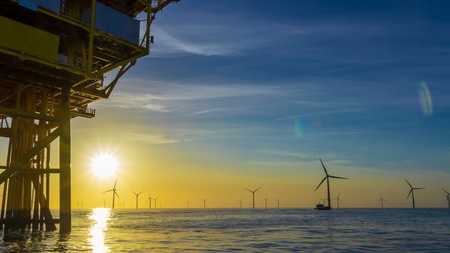Recent health and safety accidents in the offshore oil and gas industry have raised questions on the role of regulation, safety culture and overall management or risks in both established and emerging offshore energy industries. A second death was reported some weeks ago as a fatal fire broke out on the Akal-B installation in the Gulf of Mexico. With many workers suffering multiple injuries, an opinion piece by the Energy Voice suggests that the global safety picture is not encouraging and “most of the industry appears to remain in denial regarding Big Oil’s too often poor safety track record”. While this occurred in the Gulf of Mexico, the North Sea is not immune to offshore accidents.
Offshore energy health and safety incidents like the Piper Alpha have seen the UK switch to the safety case regime, which has been characterised as one of the most sophisticated in the world. While we cannot deny the robustness of the safety case regime, such a regime remains continuously tested by a variety of pressures including cost and a number of organisational factors. For several reasons, the safety case approach is yet to be adopted in the Gulf of Mexico and the US has been criticized for failing to do so.
While the risks of working in the offshore oil and gas industry are quite apparent, not many are aware that these risks are equally applicable to emerging energy technologies like offshore wind, especially in this age of energy transition. In some ways, one can say that the offshore oil and gas industry is much more experienced in dealing with offshore health and safety risks. It has a more established and robust regulatory regime, and the management of risks is largely satisfactory. However, the same cannot be said of the offshore wind energy industry and there are indications that things may get worse.
Benjamin Sovacool and others have comparatively assessed energy accidents across biofuels, biomass, geothermal, hydroelectricity, hydrogen, nuclear power, solar power and wind energy between 1950 and 2014. The study reveals “how these energy systems have collectively had 686 accidents resulting in 182,794 human fatalities and $265.1billion in property damages. Make of these numbers what you may but particularly interesting to us as offshore wind energy safety researchers is that the study reveals that wind energy has the highest incident frequency. This revelation supports a more recent study by David Rowell and others that suggests that offshore wind energy injury rates are four times higher than offshore oil and gas. It is no surprise that Trevor Johnson raised concerns that improvements in health and safety performance in the offshore wind energy industry have at best stalled if not reversed. This was owing to a number of serious incidents in 2020. Perhaps indicative of one of such incidents would be the freezing to death of Ronnie Alexander on a remote Scottish wind farm. While this incident occurred onshore, the remoteness of such an incident is indicative of the offshore environment. In this instance, the generator had broken down and there was no back-up to provide heat, light or power. Equally concerning was that there was no alternative mode of contacting emergency services owing to the patchy mobile phone service in the area – another challenge with remote working. CMS Facilities and Farrans Company were fined almost £900,000 for health and safety breaches. Mr Alexander’s wife said, “keeping people safe should be a priority and she hopes lessons can be learned from all this by those who operate in construction and remote locations”.
While there are a variety of lessons, one regulatory lesson could be drawn from the offshore oil and gas industry. It is suggested that perhaps the adoption of the safety case regulatory regime with some modification might be superior to the current broad scoped general duties under the 1974 Act and supporting legislation. The safety case regime is characterised by a comprehensive risk assessment regime and measures of regulatory scrutiny.
There is a large body of significant reports and academic research available on the subject of health and safety and dealing with accidents, including the Lord Cullen Report following the Piper Alpha disaster in 1988 where 167 people lost their lives following a large explosion and fire.
As a result of the above report, the oil and gas offshore industry adopted a safety case regime, part of which requires the duty holder to have undertaken an assessment, or assessments, in accordance with the Prevention of Fire Explosion and Emergency Response (PFEER) Regulations. These regulations came into force on 19 July 1995, almost thirty years ago, and provide guidance to those who own, operate, or work on offshore installations and also provides advice on how to respond to emergencies.
The synergy between the oil and gas industry and the transition towards offshore renewable energy is obvious from a health and safety and emergency management perspective. This can be evidenced by reviewing the British energy security strategy which was updated on 7 April 2022. However, the renewable energy industry has not chosen the safety case regime. Could this be a resource issue or is there an assumption that the health and safety risks are not just high enough? Well, the Union officials have likened the offshore wind energy industry to the Wild West and are calling for industry specific reform. While it remains unclear what those reforms might be, it is suggested that the adoption of the safety case regime should be a consideration.
Where do we go from here…
It feels like there is an opportunity to learn from some difficult experiences in the oil and gas industry when it comes to emergency management preparedness and response and to apply isomorphic learning in the renewable energy arena.
For this reason, the current offshore renewable energy guidelines would benefit from further clarity as to how a renewable energy operator provides evidence in relation to competence around compliance with major accident hazard requirements. Maybe a safety case regime, similar to the current, well-developed oil and gas approach, is the way forward?



